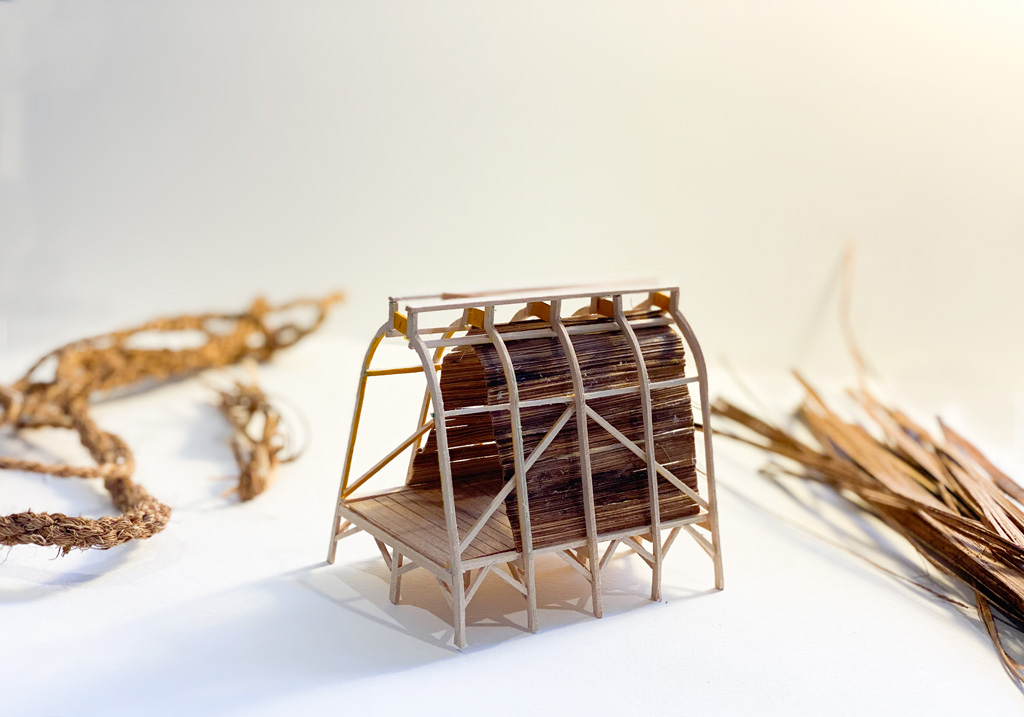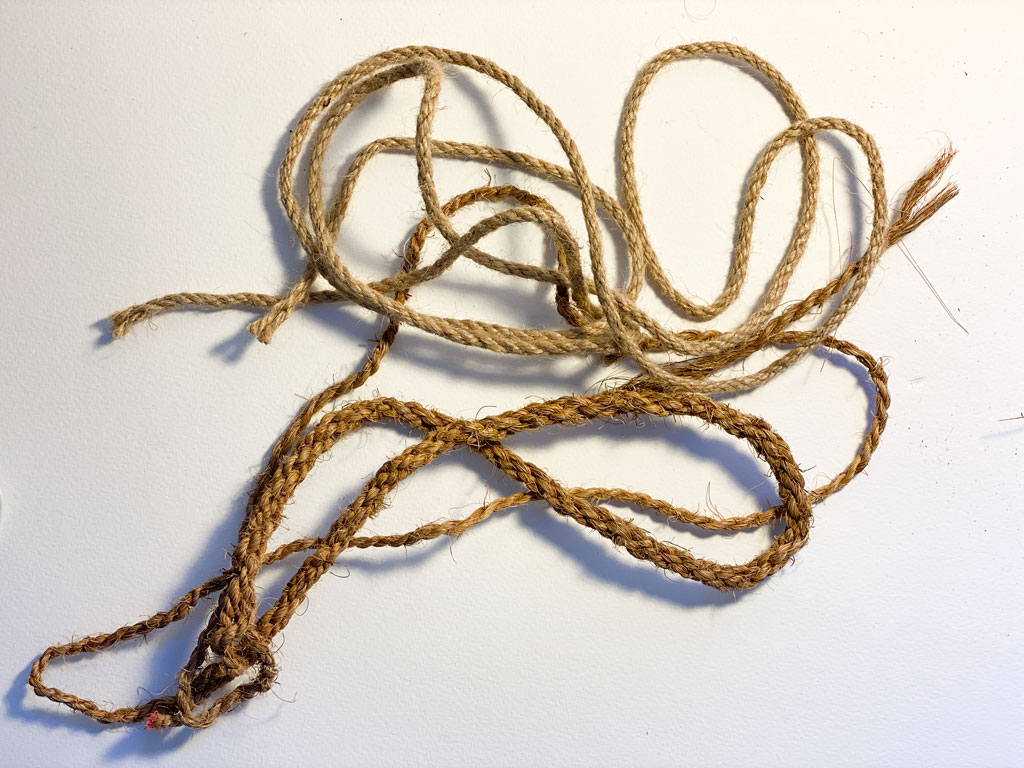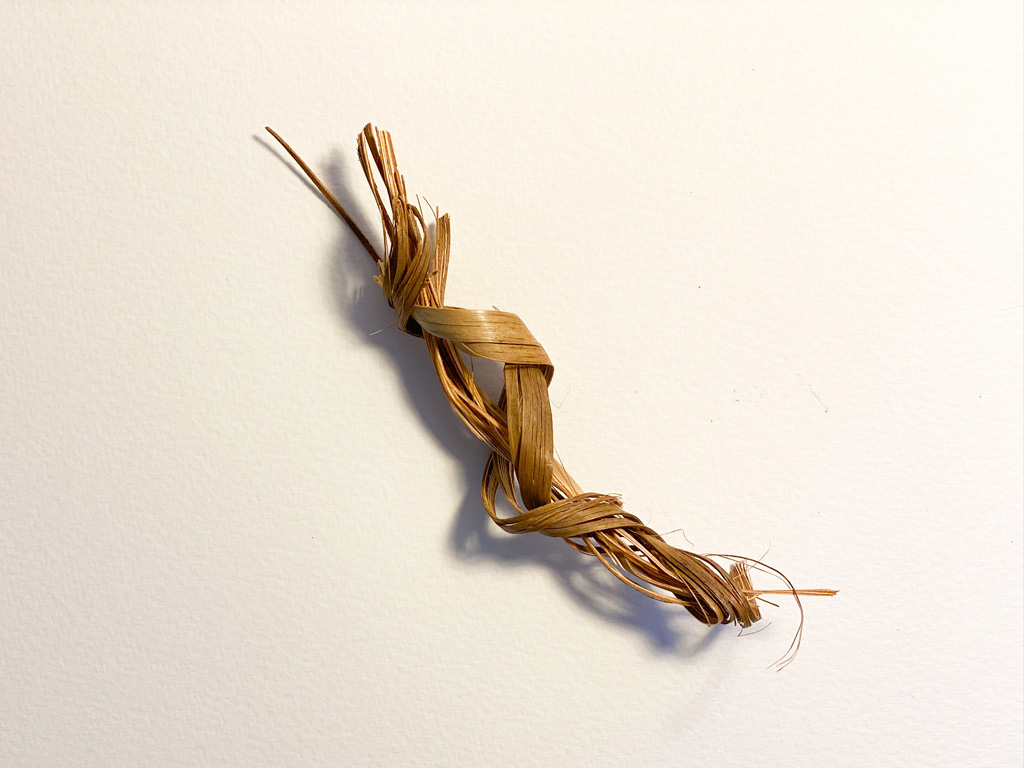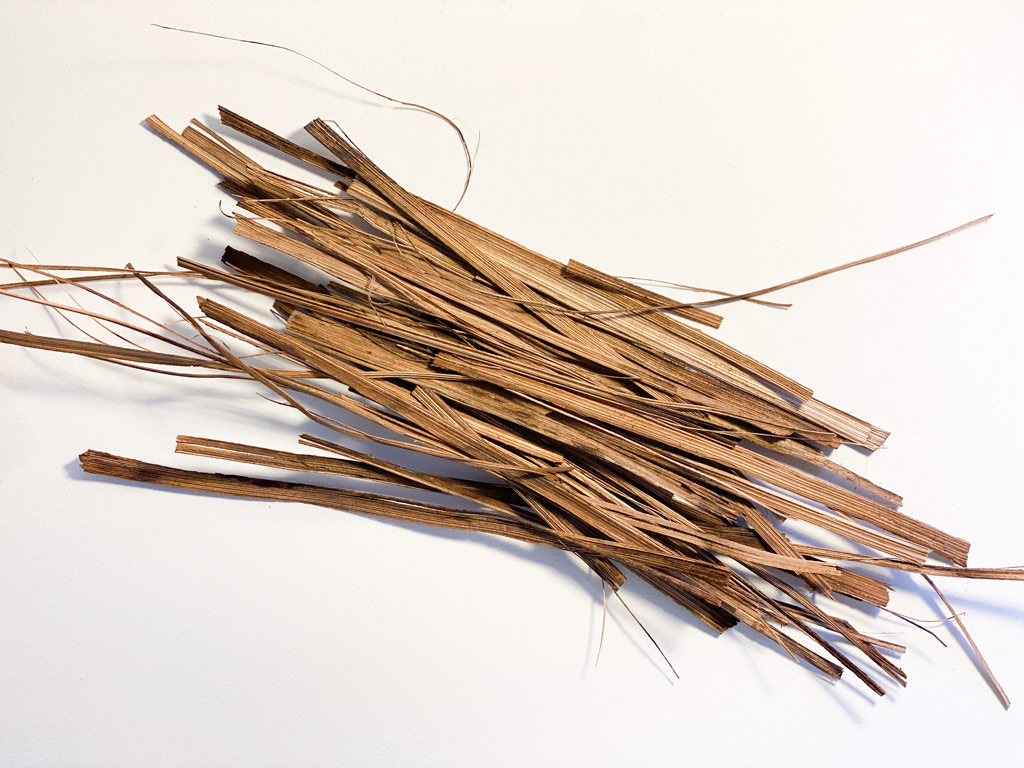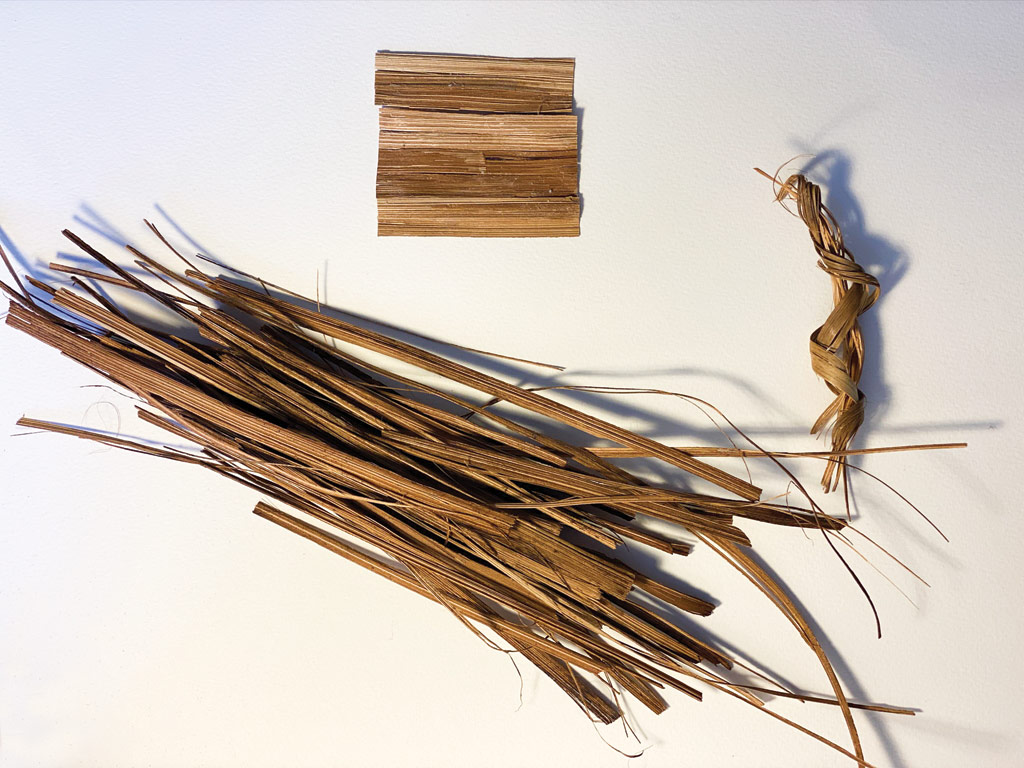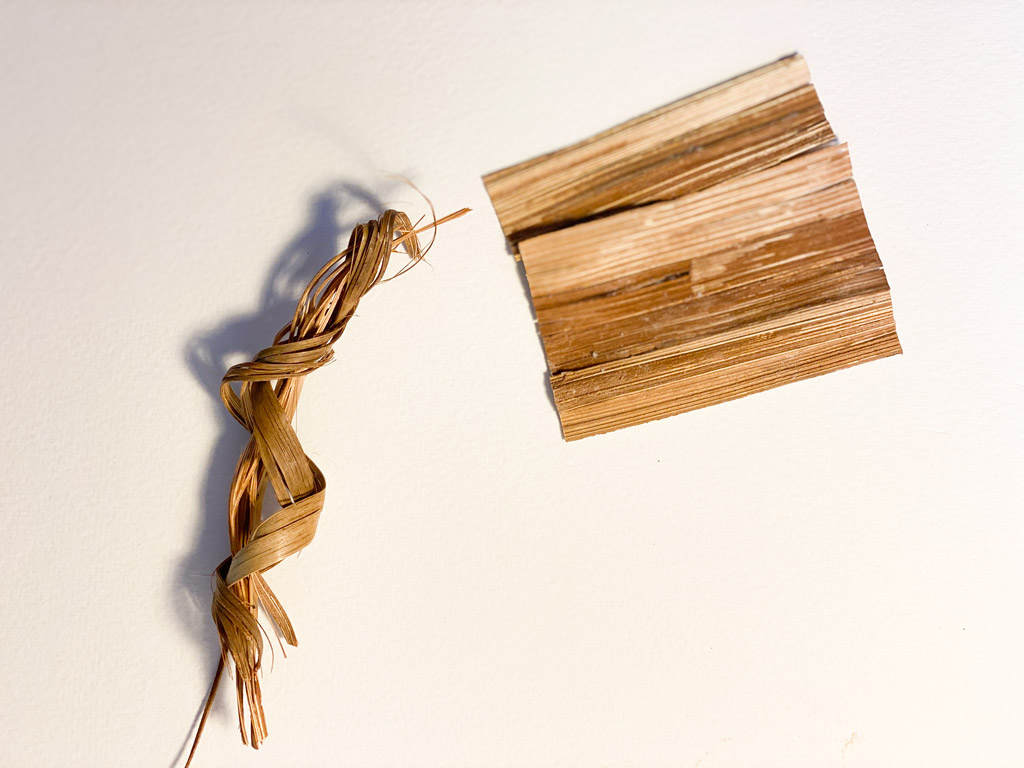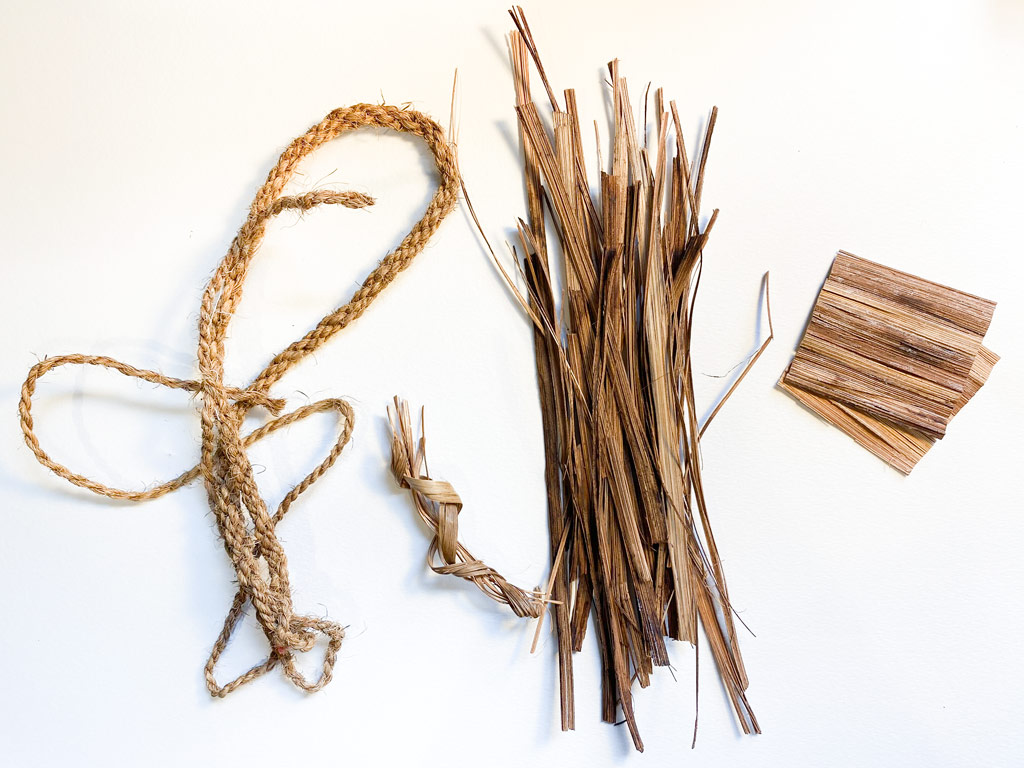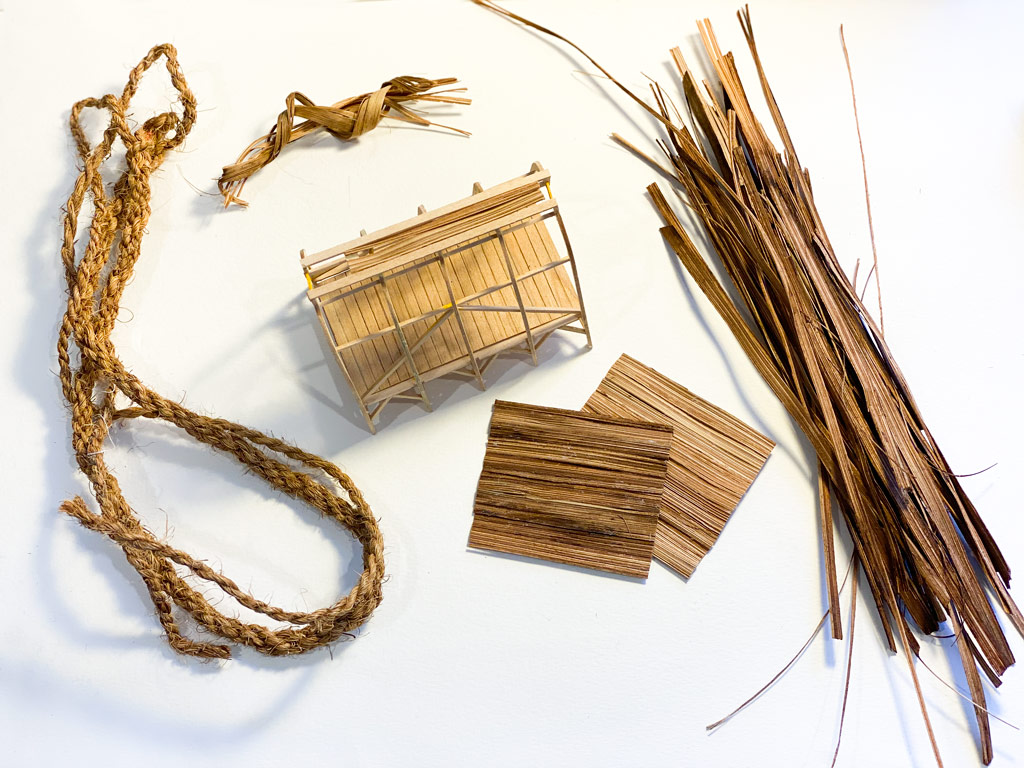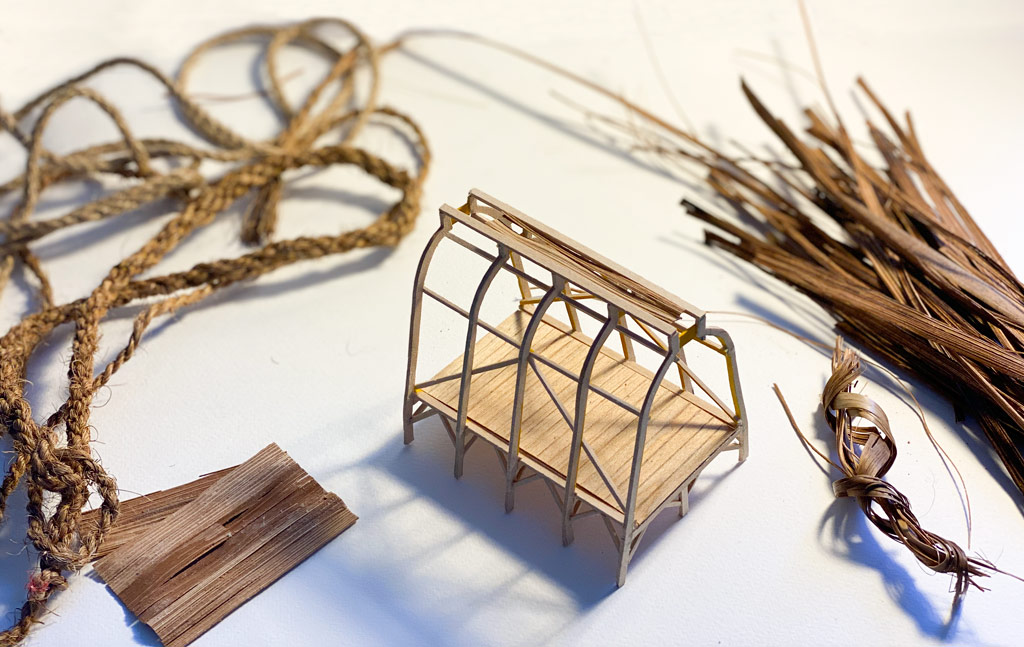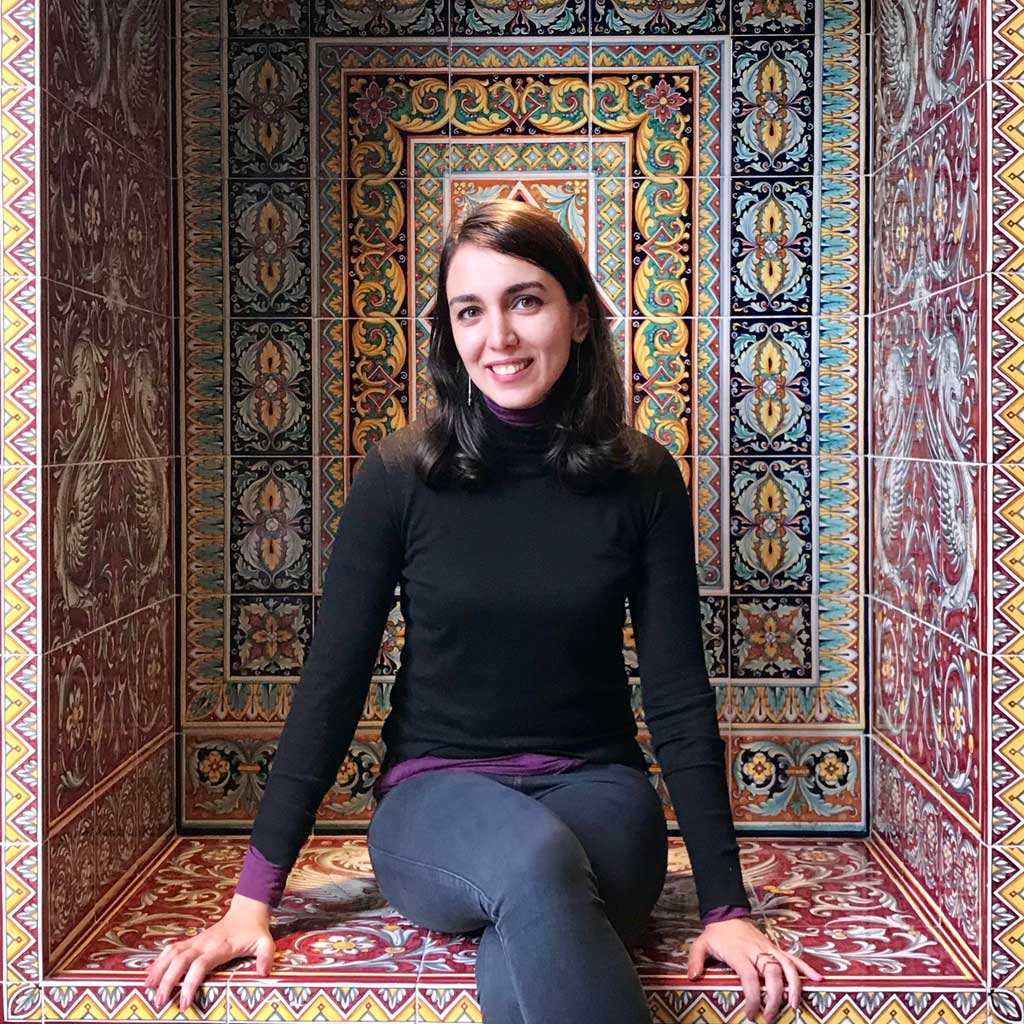Hand-Woven
Wicker and Ropes
These images show my exploration process of the hand-woven wicker and ropes from Hormozgan province, near the Strait of Hormoz in Iran. I start by unbinding and unweaving the palm strips, then I soak them in water to straighten, and then reattach and assemble them as a new planer skin. I reconnect the strips as planes that represent the skin of new pavilions that will be built and installed on the Mangrove shorelines of Gouron village in Hormozgon. As I touch the handicraft that I have carried around with me during the past several months, I travel through the warm salty waters of Persian Gulf and Gulf of Oman and reimagine the many nations that once would connect through these waters.
In the village communities of Hormozgan, women start weaving from a young age and turn all the found pieces of the abundant palm trees to usable artifacts. The more brittle parts of the palm skin and the leaves are woven as mats and baskets, and the stronger portions of the skin are extracted as strips and woven as ropes, knitting fishing nets and waterproofing elements for the locally-built wooden ocean liners. These artifacts are shaped, transformed and refined in exchange between distinct geographical locations and cultures, through the historic water route of the Strait, travelling through India and East Africa.
These objects are an extension of the context that I am getting to know and enable me to envision a growth path for the local architectural artistry. A community-initiated project, the new refuge pavilions will tell a tale of the historic see voyages and will leave the touch of the community on a vanishing shoreline, by stabilizing the sand and slowing down erosion through their legs. Each pavilion will represent a city along the historic route and will be built by local craftsmen and boat builders. The palm, once a seed, then a tree, then a woven wicker, becomes an element of refugee pavilions that women will make and paint. Craft, as a catalytic process, is aimed to build a momentum in revitalizing forgotten histories and preserving vanishing identities in, at times, a very miscommunicated world.
Yasaman Esmaili
Yasaman Esmaili is an architect and educator from Tehran, Iran. In 2017, she founded Studio Chahar, a research-based studio, formed through the interconnected global platform of design and focused on projects that engage the community at every step of the design process. Studio Chahar’s highly recognized collaborative project, Hikma Religious and Secular complex in Niger, received the 2018 Global LafargeHolcim Silver Award and the 2017 Gold Award for the Middle East Africa region. Yasaman’s collaborative work in Afghanistan, The Gohar Khatoon Girls’ School, was recognized with a 2018 AIA National Award of Honor.
Yasaman believes that architects can play an important role in empowering the community through forming a social shift. In 2018, she co-founded Color My Home with Rania Qawasma, a community-based project focused on finding the meaning of lost homes through architectural thinking by working with recently displaced immigrant and refugee children.
Yasaman is also a founding member of united4design, an international design collective formed in 2013 to simulate a dialogue about architecture and intelligent global practice. united4design’s project, Niamey 2000, received an R+D award from Architect Magazine and an Award of Merit from AIA Seattle.
Yasaman is an adjunct professor at Keene State College, University System of New Hampshire. She has also thought at the University of Washington and has been an invited guest critic at Yale, Washington State University, and Portland State University. Her work has been widely published and has been exhibited in New York, Munich, Venice, Washington DC, and Seattle.
